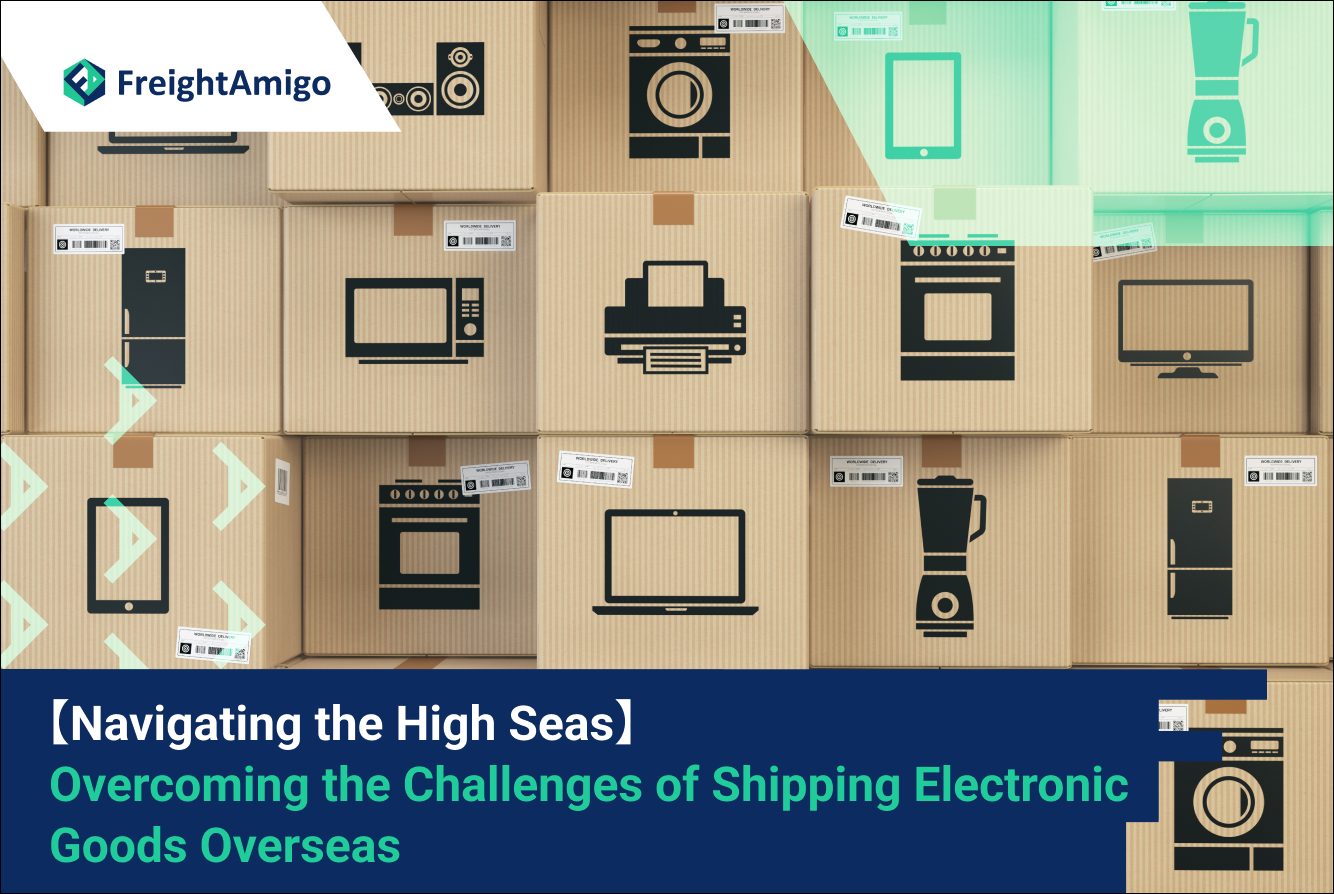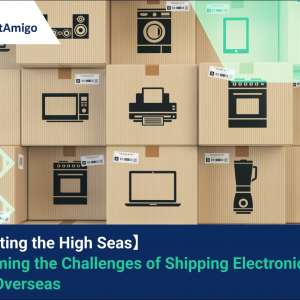Author Name: Tiffany Lee – Marketing Analyst at FreightAmigo
Shipping electronic goods overseas can be a daunting task. From navigating import regulations to ensuring proper packaging and protection, there are several challenges that need to be addressed. In this article, we will explore the various aspects of shipping electronic goods internationally and provide valuable tips to overcome these challenges.
Want To Compare The Best Express, Air Freight, Sea Freight, Rail Freight & Trucking Rates So As To Have Better Control On Cost?
Understanding the Import Regulations for Shipping Electronics
When it comes to shipping electronic goods overseas, understanding the import regulations of the destination country is crucial. Each country has its own set of rules and requirements that need to be followed. For example, if you want to import electronics to the USA, you need to be aware of the specific regulations set by the U.S. Customs and Border Protection (CBP).
To successfully navigate these regulations, it is recommended to consult with a customs broker or shipping agent who has expertise in international shipping. They can guide you through the necessary paperwork, licenses, and permits required for shipping electronics to a particular country.
Packaging and Protecting Electronics for International Shipping
Proper packaging and protection of electronic goods is vital to ensure they arrive at their destination in pristine condition. Here are some key considerations when packaging electronics for international shipping:
1. Choose sturdy and durable packaging materials: Use high-quality boxes, bubble wrap, foam padding, and anti-static materials to protect the electronics from any potential damage during transit.
2. Securely pack the electronic goods: Make sure to properly secure and cushion the electronics within the packaging to prevent any movement or impact during shipping. Use tape or straps to secure the packaging and prevent it from opening.
3. Label the packages clearly: Clearly label the packages as “Fragile” or “Handle with Care” to alert the shipping personnel about the delicate nature of the contents.
4. Remove batteries: If you are shipping electronic devices that have batteries, it is advisable to remove them and pack them separately. This reduces the risk of damage caused by battery leakage during transit.
Tips for Shipping Electronics Internationally
Shipping electronics internationally requires careful planning and execution. Here are some valuable tips to ensure a smooth and successful shipping process:
1. Research shipping options: Explore different shipping carriers and compare their services, rates, and reliability. Look for carriers that specialize in shipping electronics internationally to ensure a seamless experience.
2. Choose appropriate insurance coverage: Electronics can be expensive, so it is crucial to choose the right insurance coverage to protect your goods in case of any loss or damage during transit. Consult with your shipping agent or insurance provider to determine the best coverage for your specific needs.
3. Opt for tracking and delivery confirmation: Select shipping options that offer tracking and delivery confirmation. This allows you to monitor the progress of your shipment and provides peace of mind knowing when your electronics will be delivered.
4. Consider customs duties and taxes: When shipping electronics internationally, be prepared for potential customs duties and taxes imposed by the destination country. Research and factor in these additional costs to avoid any surprises upon delivery.
Protecting Electronics from Humidity During Shipping
Humidity can be a major concern when shipping electronic goods overseas, as it can cause damage and malfunction. Here are some effective ways to protect electronics from humidity during shipping:
1. Use desiccants: Desiccants are moisture-absorbing materials that can help reduce humidity levels inside the packaging. Silica gel packets are commonly used as desiccants and can be placed inside the packaging to absorb any moisture.
2. Seal the packaging tightly: Ensure that the packaging is sealed tightly to prevent any humidity from entering. Use high-quality tape or heat-sealing methods to create an airtight barrier.
3. Consider climate-controlled shipping: If you are shipping electronics to a particularly humid destination, consider using climate-controlled shipping services. These services maintain a controlled environment throughout the shipping process, protecting your electronics from extreme humidity levels.
Conclusion
Shipping electronic goods overseas can be a complex process, but with the right knowledge and preparation, it can be successfully navigated. Understanding import regulations, proper packaging and protection, and following valuable tips for international shipping are key to overcoming the challenges.
By taking these precautions and considering specific factors like humidity, you can ensure that your electronics arrive safely at their destination without any damage or malfunction. So, whether you are sending electronics to India from the USA or shipping a phone internationally, following these guidelines will help you overcome the challenges and ensure a smooth shipping experience.
There Are Different Options For Cargo Transportation. If You Want To Choose The Most Convenient And Suitable Solution, It Is Best To Have The Full Support Of Logistics Experts! If You Are Planning To Ship Goods Overseas, Please Go To The FreightAmigo Page For Inquiries.
===
Read More:
【Cosmetic Product Recycling】 A Guide to Sustainable Reverse Logistics
【Rise of Green Supply Chain】 Pioneering Sustainable Practices in Logistics
【ESG in Logistics】 How ESG Practices Drive Social Responsibility in Logistics
===
If you have any inquiries on logistics/supply chain, feel free to contact FreightAmigo now:
Chat with us online OR
Phone : +852 28121686
WhatsApp: +852 27467829









































